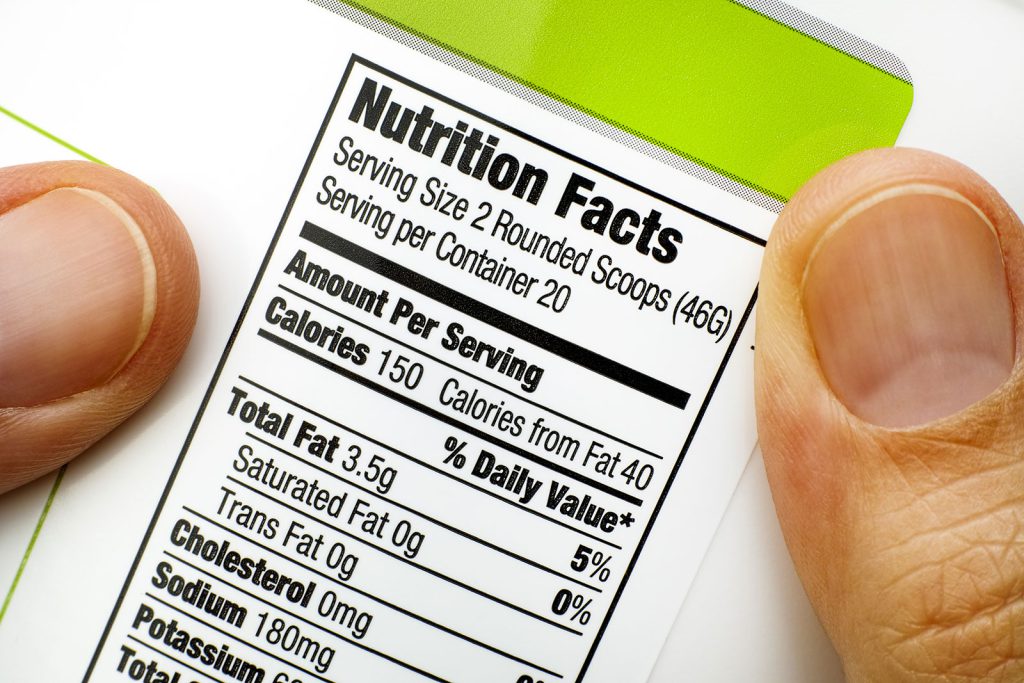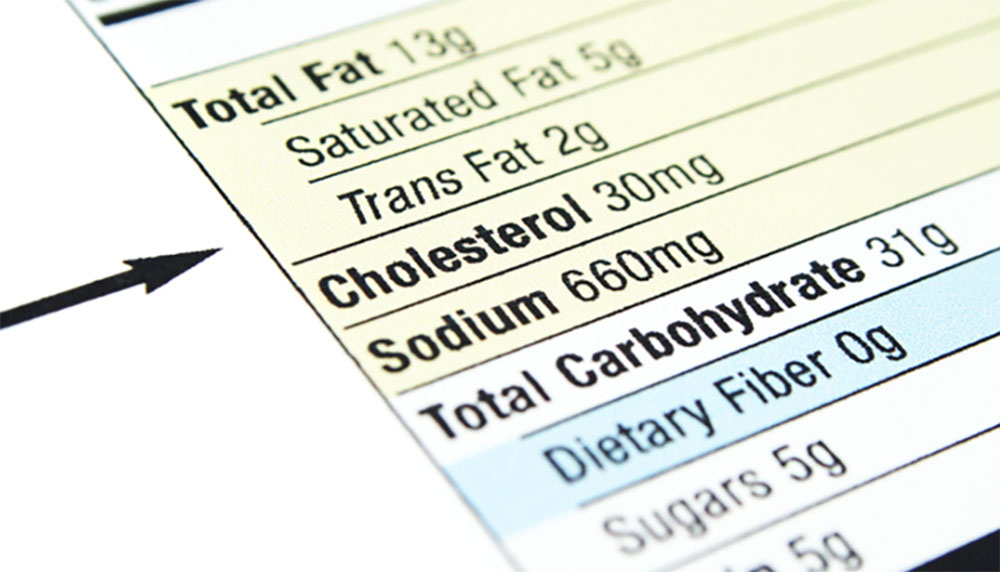It’s easy to get lost in the sea of information on food packaging, but understanding nutrition labels is an important step towards making informed decisions about what we put into our bodies.
Eating healthy plays a significant role in energy, weight management, disease prevention, mood and cognition, and overall quality of life. Nutrition can sometimes seem complicated, but the good news is that the Food and Drug Administration has a simple tool called the Nutrition Facts Label to help you know what you’re eating1. Found on all packaged foods and beverages, it serves as a guide for making choices that can affect your long-term health1.
- Start with the serving size: Make sure to check the serving size and compare it to the amount you actually eat. All of the information on the label is based on this serving size, so it’s important to pay attention to it.
- Look at the calories: Calories are a measure of how much energy is in the food. If you’re trying to manage your weight, paying attention to calories can help you make choices that fit into your overall plan.
- Check the nutrients: Nutrients like fat, cholesterol, sodium, carbohydrates, fiber, sugars, and protein are listed on the label. Keep in mind that some of these are more important than others, depending on your individual health goals. Limit the amounts of saturated fat and sodium you eat and avoid trans fat. Choose foods with less of these nutrients when possible2.
- Make sure you get enough of beneficial nutrients, such as: dietary fiber, protein, calcium, iron, vitamins and other nutrients you need every day2.
- The % Daily Value (DV) tells you the percentage of each nutrient in a single serving, in terms of the daily recommended amount. As a guide, if you want to consume less of a nutrient (such as saturated fat or sodium), choose foods with a lower % DV – 5% or less. If you want to consume more of a nutrient (such as fiber), seek foods with a higher % DV – 20% or more2.
- Watch out for hidden ingredients: Some ingredients can be disguised under different names, so it’s important to read the ingredients list carefully. Look out for things like added sugars, artificial sweeteners, and preservatives.

It is also important to remember that the information shown in these panels is based on 2,000 calories a day. You may need to consume less or more than 2,000 calories depending upon your age, gender, activity level, and whether you’re trying to lose, gain or maintain your weight2.
In addition, beware when the Nutrition Facts Label says a food contains “0 g” of trans fat. According to the AHA, if the label says a food contains “0 g” of trans fat, but includes “partially hydrogenated oil” in the ingredient list, it means the food contains trans fat, but less than 0.5 grams of trans fat per serving. So, if you eat more than one serving, you could quickly reach your daily limit of trans fat2.

The U.S. Department of Agriculture provides helpful dietary guidelines for specific ages and gender, which can be found in the online resource Dietary Guidelines for Americans. According to this guideline, the follow are important foods and nutrients to reduce and increase:
Foods and food components to reduce:
- Reduce daily sodium intake to less than 2,300 milligrams (mg) and further reduce intake to 1,500 mg among persons who are 51 and older and those of any age who are African American or have hypertension, diabetes, or chronic kidney disease. The 1,500 mg recommendation applies to about half of the U.S. population, including children, and the majority of adults3.
- Consume less than 10 percent of calories from saturated fatty acids by replacing them with monounsaturated and polyunsaturated fatty acids3.
- Consume less than 300 mg per day of dietary cholesterol3.
- Keep trans fatty acid consumption as low as possible by limiting foods that contain synthetic sources of trans fats, such as partially hydrogenated oils, and by limiting other solid fats3.
- Reduce the intake of calories from solid fats and added sugars3.
- Limit the consumption of foods that contain refined grains, especially refined grain foods that contain solid fats, added sugars, and sodium3.
Foods and nutrients to increase:
- Individuals should meet the following recommendations as part of a healthy diet, while staying within their calorie needs.
- Increase vegetable and fruit intake3.
- Eat a variety of vegetables, especially dark-green and red and orange vegetables and beans and peas3.
- Consume at least half of all grains as whole grains. Increase whole-grain intake by replacing refined grains with whole grains3.
- Increase intake of fat-free or low-fat milk and milk products, such as milk, yogurt, cheese, or fortified soy beverages3.
- Choose a variety of protein foods, which include seafood, lean meat and poultry, eggs, beans and peas, soy products, and unsalted nuts and seeds3.
- Increase the amount of seafood consumed by choosing seafood in place of some meat and poultry3.
- Replace protein foods that are higher in solid fats with choices that are lower in solid fats and calories and/or are sources of oils3.
- Use oils to replace solid fats where possible.
- Choose foods that provide more potassium, dietary fiber, calcium, and vitamin D, which are nutrients of concern in American diets. These foods include vegetables, fruits, whole grains, and milk and milk products3.
It is important to find a way to incorporate exercise into your daily routine. In addition, avoid skipping breakfast, and always try to eat at least three meals a day, or five small meals throughout the day. Strive for balance and avoid eating too much of one food group. The MyPlate Food Guide (https://www.choosemyplate.gov) is an online resource that identifies daily meal proportions for the fruit, vegetable, grains, protein, and dairy food groups designed to help Americans build a healthy plate at meal times.
©2023HealthSpot References: (1) US Food and Drug Administration. 2018. A How-To Guide for Older Adults. Retrieved from https://www.fda.gov/downloads/Food/IngredientsPackagingLabeling/UCM275396.pdf (2) American Heart Association. 2017, March 7. Understanding Food Nutrition Labels. Retrieved from https://healthyforgood.heart.org/eat-smart/articles/understanding-food-nutrition-labels (3) US Department of Agriculture. 2010. Dietary Guidelines for Americans, 2010. Retrieved from https://health.gov/dietaryguidelines/dga2010/DietaryGuidelines2010.pdf (4) US department of Agriculture. 2018. Build a Healthy Eating Style. Retrieved from https://www.choosemyplate.gov/MyPlate

